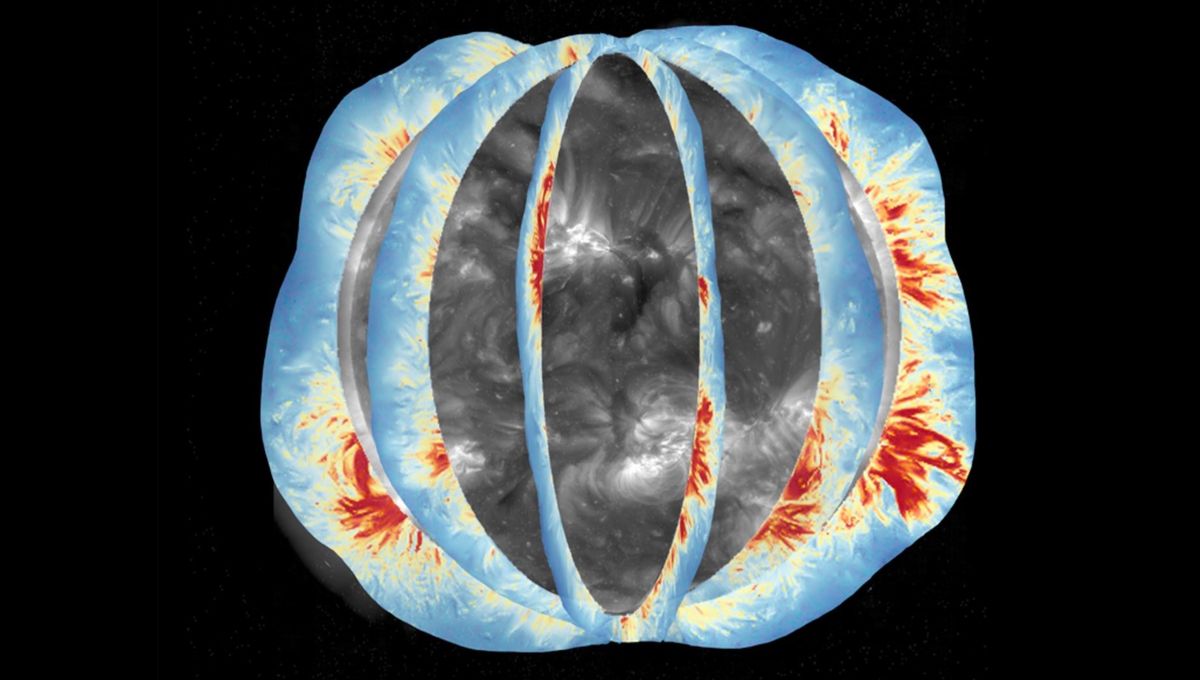
Researchers have released the most accurate and consistent map of the magnetic fields in the Sun’s corona – its tenuous but incredibly hot atmosphere. The magnetic fields play a role in the heating of the corona, which is hundreds of times hotter than the surface of the Sun, reaching millions of degrees. It also determines the space weather across the Solar System.
The Sun is nearing its maximum, the peak of activity that happens every 11 years. In the news, we hear regularly of coronal mass ejections. Monitoring the solar corona is very important. Thanks to space observatories like SOHO, the Solar Dynamics Observatory, Parker Solar Probe, and Solar Orbiter we are learning so much about the Sun – but that doesn’t mean that ground-based instruments are not important.
The Daniel K. Inouye Solar Telescope can measure the magnetic field of the corona in three dimensions and high detail but it cannot map the whole Sun in one go. The Upgraded Coronal Multi-channel Polarimeter (UCoMP) can. Scientists working with the instruments have now published 114 maps, taken over the course of eight months (almost one a day) showing this revolution in solar monitoring.
“Global mapping of the coronal magnetic field has been a big missing part in the study of the Sun,” Zihao Yang, lead author who pursued this research as a PhD graduate at Peking University, China, and is now a postdoctoral fellow at the US National Science Foundation National Center for Atmospheric Research (NSF NCAR), said in a statement.
“This research is helping us fill a crucial gap in our understanding of coronal magnetic fields, which are the source of the energy for storms that can impact Earth.”
Routinely measuring the coronal magnetic field marks the beginning of a new era of solar monitoring. This will lead to a better understanding of the Sun (and other stars) but also better protection from the space weather influenced by our little yellow star.
“Since coronal magnetism is the force that sends mass from the Sun flying across the Solar System, we have to observe it in 3D – and everywhere all at once, throughout the global corona,” said Sarah Gibson, Coronal Solar Magnetism Observatory Development Lead and an NSF NCAR scientist co-author on the paper.
“Yang’s work represents a huge step forward in our ability to understand how the Sun’s global coronal magnetic field changes from day to day. This is critical to our ability to better predict and prepare for solar storms, which are an ever-increasing danger to our ever-more technologically dependent lives here on Earth.”
A paper discussing the results is published in the journal Science.
Source Link: Magnetic Field Of The Sun’s Atmosphere Seen Like Never Before Thanks To 114 New Maps